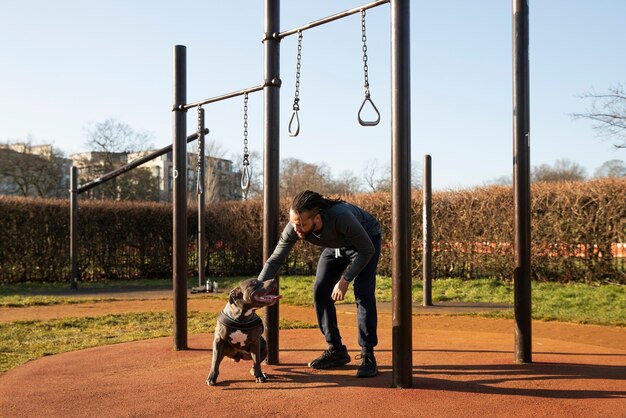Bathroom Remodeling For Aging In Place: Key Features To Include
As people age, their homes must evolve to meet their changing needs, and the bathroom is one of the most critical areas requiring attention. Bathroom remodeling Keller for aging in place focuses on enhancing safety, accessibility, and comfort while maintaining the space’s aesthetic appeal.
Whether you’re planning for yourself or helping a loved one prepare their home for the future, this guide outlines vital features to include in a bathroom remodel to support aging in place.
1. Walk-In or Curbless Shower
A walk-in or curbless shower is a top priority in any bathroom designed for aging in place. Traditional bathtubs or showers with high curbs can be challenging and dangerous for older adults to step over.
A walk-in shower eliminates this hazard by providing a smooth, level entry that reduces the risk of tripping. Consider installing non-slip porcelain tile within the shower area and throughout the bathroom for added safety. porcelain tile is not only durable and stylish but also available in slip-resistant options, making it an excellent choice for enhancing bathroom safety and aesthetics.
Grab Bars and Handrails
Incorporating grab bars and handrails is essential to prevent falls and provide stability. These should be strategically placed near the shower, toilet, and bathtub areas.
Modern grab bars come in various designs and finishes, allowing them to blend seamlessly with the bathroom’s decor while serving a critical safety function.
2. Comfort-Height Toilet
Standard toilets are typically around 15 inches from the floor, which can be too low for older adults or those with mobility issues.
A comfort-height toilet, also known as a chair-height toilet, is approximately 17 to 19 inches high, making it easier to sit down and stand up. This simple change can significantly enhance comfort and independence in the bathroom.
Raised Toilet Seats
If replacing the toilet isn’t feasible, adding a raised toilet seat can achieve similar benefits. These seats can be easily installed on existing toilets and have built-in armrests for added support.
3. Non-Slip Flooring
Bathroom floors are prone to becoming slippery, especially when wet, which poses a significant risk for older adults.
Non-slip flooring materials, such as textured tiles or slip-resistant vinyl, can greatly reduce the likelihood of falls. Additionally, using smaller tiles with more grout lines can enhance traction.
Avoid Loose Rugs
Loose rugs can be a tripping hazard. If you prefer the comfort of rugs, opt for non-slip mats that adhere securely to the floor.
4. Accessible Storage
Storage in a bathroom designed for aging in place should be easily accessible without requiring bending or stretching. Consider installing pull-out drawers, open shelving, or adjustable-height cabinets.
Ensure that essential items like toiletries, medications, and towels are within easy reach to minimize the need for reaching or straining.
Lever-Style Handles
Traditional knobs on cabinets can be difficult for those with arthritis or limited hand strength. Lever-style handles are easier to operate and provide a more accessible option for everyone.
5. Adjustable or Handheld Showerhead
An adjustable or handheld showerhead is a versatile feature that can accommodate different user needs and preferences. A handheld showerhead allows for more control and flexibility, making it easier for individuals to bathe while seated. Pair this with a shower chair or bench to enhance comfort and safety during showering.
Thermostatic Valve
A thermostatic valve ensures that water temperature remains consistent, preventing sudden changes that could cause discomfort or burns. This feature particularly benefits older adults with reduced sensitivity to temperature changes.
6. Adequate Lighting
Good lighting is crucial in any bathroom, but it becomes even more important as eyesight diminishes with age. Consider installing bright, even lighting throughout the bathroom, particularly around the vanity and shower areas.
Motion-activated lights can provide convenience and safety by automatically illuminating the room when someone enters.
Nightlights
Nightlights are a simple yet effective way to enhance nighttime navigation. They can be placed along pathways or near the toilet to guide users safely through the bathroom during the night.
7. Widened Doorways
Standard doorways can be too narrow for older adults who use wheelchairs or walkers. Widening doorways to at least 32 inches ensures that mobility aids can pass through comfortably. In some cases, replacing traditional doors with sliding or pocket doors can also save space and make the bathroom more accessible.
Low-Threshold Entryways
Low-threshold entryways are another way to improve accessibility, especially for those with mobility issues. Reducing or eliminating thresholds can make it easier to navigate the bathroom safely.
Conclusion
Aging in place is about maintaining independence and comfort in a familiar environment. By incorporating these key features into your bathroom remodel, you can create a space that is not only safer and more accessible but also stylish and functional.
Thoughtful planning and design of House renovations Keller can ensure that the bathroom remains a place of comfort and ease, regardless of age or physical ability.
Whether you’re updating your current home or planning for the future, these enhancements will provide peace of mind and improve the overall quality of life.
Contact 1836 Construction Co. today for expert bathroom remodeling services tailored to aging in place, ensuring safety, accessibility, and style in your home.







